“I didn’t pull the trigger, but I know who did!” Tyler Robinson breaks the silence in court — And what he says in the middle of the trial changes the entire Charlie Kirk case!
“I didn’t pull the trigger, but I know who did!” Tyler Robinson breaks the silence in court — And what he says in the middle of the trial changes the entire Charlie Kirk case!
In a courtroom charged with tension and emotion, Tyler Robinson—the young man once painted as a cold-blooded killer—finally broke his silence. What unfolded was not just another day in court, but a moment that would send shockwaves through the nation.
Through trembling lips and tear-filled eyes, Robinson delivered an apology that stunned the judge, the jury, and millions watching from afar. But it wasn’t just remorse he offered—it was revelation.
“I’m sorry for what happened to Charlie,” he said quietly, his voice shaking.
“I didn’t pull the trigger… but I know who did.”
Those words, spoken in the still air of the courtroom, changed everything.
A Case That Captivated the Country
The death of Charlie Kirk, a rising conservative figure known for his charisma and influence, had already gripped the nation. Found dead under mysterious circumstances at
Utah Valley University on September 10, 2025, his passing ignited a firestorm of speculation.
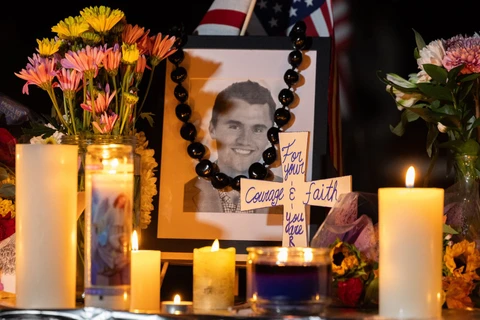
The initial story seemed simple. Authorities named Tyler Robinson—a 22-year-old student with alleged online ties to extremist groups—as the primary suspect. Within just
33 hours, he surrendered to police.
Digital evidence appeared airtight. A trail of messages, surveillance footage, and phone pings built what prosecutors called an “unbreakable case.”
But now, as Robinson’s confession reverberates through the media, that once-straightforward narrative is beginning to unravel.
Inside the Courtroom: The Turning Point
When Robinson took the stand, the atmosphere was electric. Every creak of the wooden benches echoed as journalists, family members, and onlookers waited to hear what he would say.
Gone was the defiant young man seen in early hearings. In his place stood someone visibly haunted—shoulders hunched, eyes hollow, his hands trembling as he held the microphone.
Then, in a single breath, he rewrote the story of Charlie Kirk’s death.
“I didn’t mean for things to go this way,” he began, pausing as if choosing every word carefully. “I was there… but I wasn’t the one who ended it. There are others. Powerful ones. And I can’t protect them anymore.”
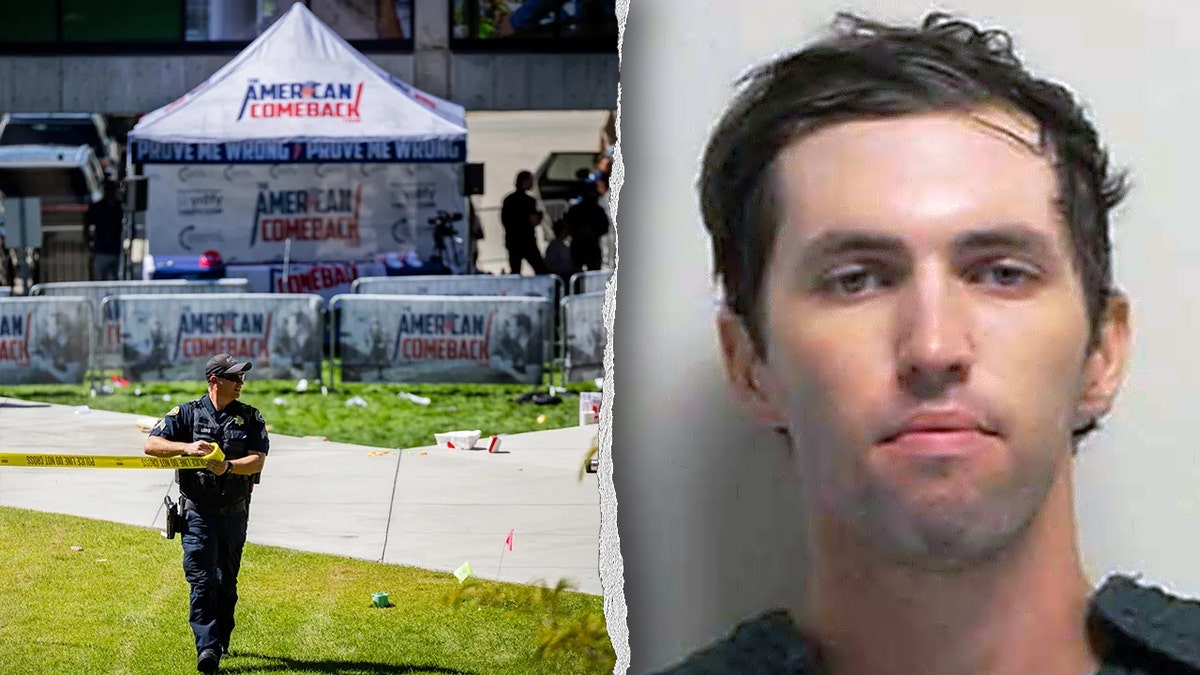
Gasps filled the room. The judge’s gavel slammed for order. Even the seasoned reporters at the back exchanged stunned glances.
It wasn’t just an apology—it was an accusation.
The Hidden Layers Behind the Case
For weeks, whispers had circulated that something about the case didn’t add up. Online forums dissected every frame of surveillance footage, every timestamp in the text logs, and every witness statement that seemed just a little
too polished.
The most explosive clue came from a photo allegedly showing Tyler Robinson at a Dairy Queen hours after the shooting—calm, unbothered, even smiling. If true, it shattered the prosecution’s carefully constructed timeline.
Experts and commentators like Candace Owens publicly questioned whether Robinson had been a pawn in something much larger.
And now, his courtroom statement seemed to confirm their suspicions.
A Web of Power, Secrets, and Fear
Robinson’s lawyer moved quickly to request an in-camera session—closed to the public—suggesting his client feared for his safety. Sources close to the defense hinted that Tyler had been “under extreme pressure” from unnamed individuals connected to both political and media circles.
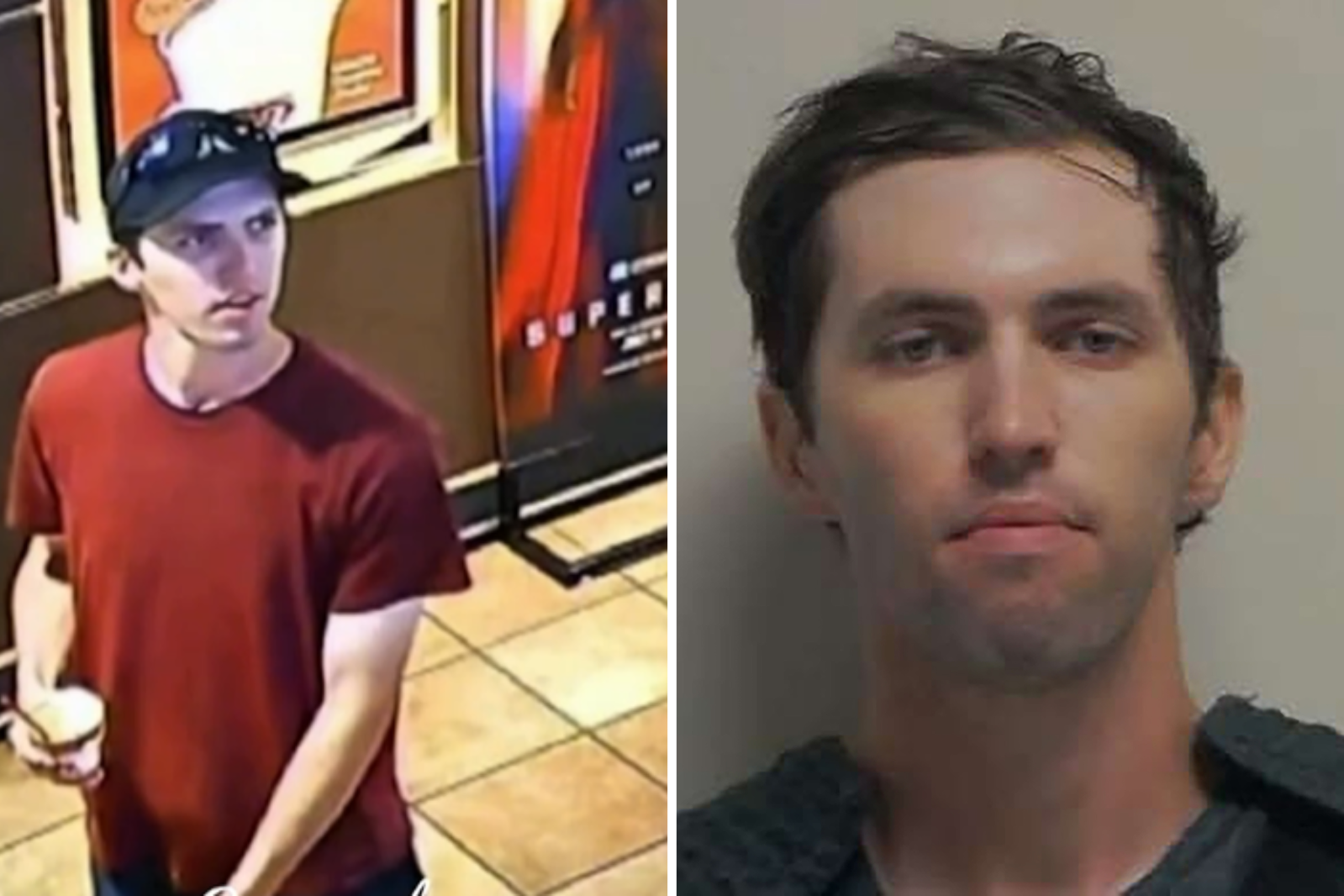
Behind closed doors, he reportedly named people who could “blow the case wide open.” While court officials have refused to comment, leaks suggest his claims touch on campaign donors
security contractors, and insiders tied to the events leading up to Charlie’s death.
One anonymous court observer described the moment as “the first crack in a very large wall.”
Community Reaction: Shock, Division, and Anger
Outside the courthouse, hundreds gathered—some demanding justice for Charlie, others calling for an independent investigation.
Social media lit up with theories, hashtags, and live commentary. Supporters of Charlie Kirk expressed outrage, while skeptics warned that the case was becoming dangerously politicized.
Local leaders called for calm but also for truth. “We can’t allow this to become another story buried under bureaucracy,” said one Utah official. “If there are others involved, we need to know.”
For many in the community, Tyler’s confession wasn’t just about one man’s guilt—it was about whether justice in America can still survive political influence.
The Legal Fallout: A Case Reopened
Robinson’s bombshell admission has forced prosecutors into a corner. Their once-solid narrative now faces public doubt and legal uncertainty.
Legal analysts suggest the defense may now file for a mistrial or plea renegotiation
, citing coercion, withheld evidence, or even external interference. Meanwhile, federal investigators are said to be re-examining data logs, camera footage, and communications from the day of Charlie’s death.
“If what Tyler said holds even a grain of truth,” one former prosecutor told Fox News, “then this isn’t just a murder case—it’s a cover-up.”
The Man at the Center: Who Was Charlie Kirk in His Final Days?
Before his death, Charlie Kirk had been navigating what some insiders described as “the most stressful period” of his career.
Reports surfaced of internal conflicts within Turning Point USA, financial disputes, and strategic disagreements about the movement’s direction. His final weeks were marked by tension, public scrutiny, and exhaustion.
In one of his last interviews, Kirk told Megyn Kelly, “You’d be shocked who your real enemies are—they’re not always on the other side.” Those words now echo with eerie significance.
What Comes Next
The next phase of the trial promises to be explosive. Robinson’s statement has opened a Pandora’s box, and investigators are now under immense pressure to pursue the leads he’s exposed.
Who are the “powerful names” he hinted at? Why did the initial investigation appear rushed? And perhaps most haunting of all—if Tyler didn’t pull the trigger, who did?
Each day brings new leaks, new witnesses, and new pieces of evidence that threaten to rewrite the story entirely.
For Charlie’s family, it’s a painful waiting game. For the public, it’s a gripping saga of betrayal, truth, and power.
Conclusion: A Nation Demands Answers
As the courtroom lights dimmed that day, one thing became clear: the truth about Charlie Kirk’s death is far from simple.
Tyler Robinson’s confession—part apology, part revelation—has torn open a story that the public thought was settled. Whether he’s a manipulative liar or a reluctant whistleblower remains to be seen, but one fact is undeniable: he has changed the course of this case forever.
In the weeks ahead, the eyes of the nation will stay fixed on Utah. The fight for truth has only just begun.
And somewhere beneath the headlines, behind the political theater and courtroom drama, lies one haunting question—who really killed Charlie Kirk?
The courtroom was silent — not the respectful silence of a routine hearing, but the kind that hums with electricity. Cameras were forbidden, but the air was thick with live-bloggers typing furiously from their laptops, waiting for the next quote that would explode across soc
Robinson sat in the witness chair, wearing a gray suit two sizes too large. His eyes were heavy, his hands restless. For days, he had refused to answer key questions about his role in the chaotic minutes after Kirk was discovered. He had claimed memory loss, shock, trauma — anything but detail.
But some
When the judge asked whether he wished to make a statement, Robinson looked up, swallowed
“Yes, Your Honor. I think it’s time people heard the truth.”
The gallery leaned forward.
And then he said it:
“I didn’t pull the trigger. But I know who did.”
Gasps in the Gallery
A wave of sound rolled through the room — gasps, murmurs, the rustle of notebooks snapping open. Reporters exchanged wide-eyed looks.
Judge Madison banged the gavel twice. “Mr. Robinson,” she said sternly, “this court reminds you that your statements must relate directly to the evidence at hand.”
But Robinson only nodded, his gaze fixed on the prosecution table, where Eli Hawthorne — Kirk’s former bodyguard — sat flanked by his defense team.
“I’ve been quiet because I was scared,” Robinson continued. “Scared of what would happen if I told you what I saw. But after what they did to me, after what they made me erase — I can’t stay quiet anymore.”
Every word seemed to pull the air tighter.
The courtroom seemed to shrink as Tyler Robinson continued, each word dripping with fear and urgency. “There are people involved who are… untouchable,” he whispered, his voice quivering.
“People with influence, with money, with power over things we don’t even understand. I saw them plan things—things that led to Charlie’s death. I was there, I heard it, and I was forced to stay silent.”
The room was paralyzed. Journalists frantically typed, their fingers flying across keyboards as social media feeds lit up in real time. The tension was palpable; even the court stenographer seemed to hesitate before transcribing the next explosive revelation.
Robinson paused, swallowing hard. “I’ve been told that if I spoke, I wouldn’t just be in danger—my family wouldn’t be either. I tried to protect them by staying silent. But now… I can’t live with the lies anymore. The people you’ve been looking at, the suspects you think are responsible—they’re just the tip of the iceberg.”
A heavy murmur rippled through the gallery. The defense attorney rose immediately, asking the judge for a brief recess to confer with his client. Judge Madison, her expression a mix of concern and authority, nodded but warned, “This court will proceed with caution. Mr. Robinson, any accusation you make must be supported by evidence. Speculation will not suffice.”
But Robinson’s eyes were hollow, haunted. “There is evidence,” he insisted. “Hidden evidence. Things they didn’t want anyone to see—emails, recordings, surveillance logs. I know where some of it is. I can show you… but I need protection first. I can’t do this alone.”
At that moment, Eli Hawthorne, Kirk’s former bodyguard, leaned forward. His usual stoicism cracked slightly. “Tyler,” he said, his voice low but intense, “if you’re telling the truth, then we need names. People’s lives are at stake. This isn’t just about you or Charlie anymore. This is bigger than all of us.”
Robinson shook his head. “You don’t understand. They’re watching everything. Phones, emails, even our movements. That’s why I had to erase the footage, the messages. I was forced to do it… under threat.” His voice dropped to a whisper, barely audible. “They told me no one would believe me if I spoke, and that anyone who tried would disappear.”
Gasps filled the courtroom again, and even the judge’s gavel seemed to tremble in the weight of the moment. Judge Madison adjusted her glasses, eyes narrowing. “Mr. Robinson, if you possess tangible evidence, this court will provide protection. But you must be specific. Vague threats and insinuations are insufficient.”
Robinson nodded slowly, a flicker of relief crossing his face. “I… I can give names. And I can show what happened. But I need assurances. Protection for me, for my family, and for anyone who helps me. Otherwise…” He didn’t finish the sentence, but the meaning was clear.
A hush fell over the room. For weeks, the narrative had seemed clear: Tyler Robinson, the young man linked online to extremist ideologies, had allegedly killed Charlie Kirk in a fit of rage or ideological fanaticism. That narrative had dominated headlines, dominated courtrooms, and shaped public opinion. Now, everything was unraveling.
Outside the courthouse, crowds swelled. Supporters of Charlie Kirk clashed with skeptics, while journalists live-streamed every detail. Hashtags demanding a full investigation began trending globally.
Legal analysts speculated nonstop, debating the implications of Robinson’s admission. Some suggested the potential for high-level political scandal; others warned that conspiracy theories could spiral out of control.
Inside the courthouse, Robinson continued. “I remember the night. The tension. The plan. They manipulated everyone—me, the security teams, even the surveillance systems. No one was innocent. Everyone was being used. And when it happened… I tried to stop it, but it was too late. I… I watched it unfold.”
Candace Owens Uncovers Erika’s Secret Plot to Target Charlie Kirk │ Leaked Documents Shake the Nation From the very beginning, Candace Owens refused to accept the official story of Charlie Kirk’s sudden [email protected]

In the early hours following the shocking news of Charlie Kirk’s untimely death, the public and media were left scrambling for answers. The official story offered a straightforward narrative, suggesting that the event was an accident with no foul play involved.
Yet, from the very beginning, Candace Owens expressed her doubts. Known for her tenacity in questioning widely accepted accounts, Owens refused to accept the official story at face value. Instead, she insisted that there were deeper, hidden factors that the public had yet to uncover.
Owens’ initial suspicions were not drawn from conjecture alone. In recent weeks, several documents have emerged that appear to contradict the official narrative.
These leaked documents, though incomplete, suggest that Charlie Kirk’s death may have been the result of a meticulously planned scheme rather than a random occurrence. Candace Owens, leveraging her network of contacts and her reputation for investigative rigor, began examining the evidence with a critical eye.
One of the earliest anomalies she highlighted was the sequence of events on the day of Kirk’s death. Multiple eyewitness accounts report inconsistencies that the official investigation seemed to gloss over.
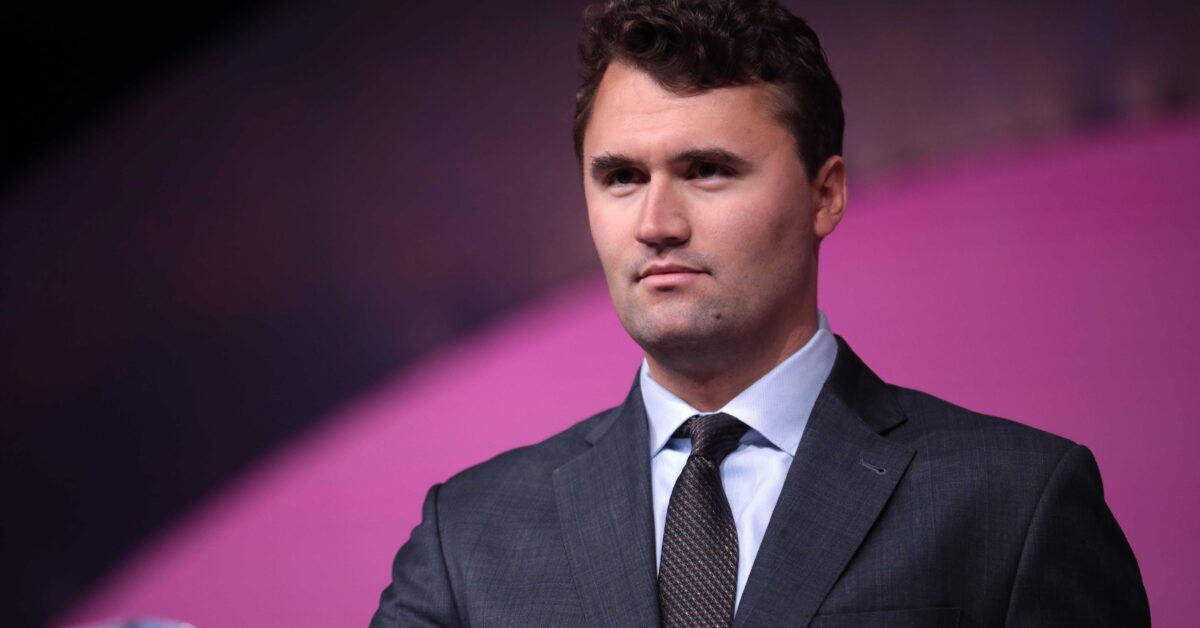
For example, security footage from nearby establishments showed unusual movements near Kirk’s vehicle before the incident occurred. While law enforcement attributed these movements to coincidental passerby activity, Owens noticed a pattern that suggested deliberate manipulation of the scene.
Among the key figures mentioned in the documents was Tyler Robinson, a close associate of Charlie Kirk. Initially, Robinson was widely portrayed in media reports as the person responsible for the chain of events leading to Kirk’s death. However, Candace Owens raised a critical question: was Tyler truly the mastermind, or was he merely a pawn in a more sophisticated plot?
Owens points out that Tyler’s public persona and professional history show no evidence of violent intent or planning. Interviews with friends and colleagues describe him as reliable, conscientious, and highly ethical.
If these accounts are accurate, it raises the troubling possibility that Tyler may have been manipulated or set up to absorb blame. This perspective significantly alters the interpretation of the leaked documents, suggesting that the narrative presented by authorities may have been oversimplified.
As the investigation deepened, Candace Owens turned her attention to Erika, a figure whose proximity to Charlie Kirk gave her unprecedented access to his professional and personal life.
The leaked documents imply that Erika may have had motivations to destabilize Kirk, though the precise nature of those motivations remains a subject of speculation.
Several communications revealed in the documents show Erika in discussions that appear strategically calculated, hinting at the orchestration of events that would ultimately lead to Kirk’s demise.
While these communications do not explicitly admit culpability, the timing and content suggest premeditation. Owens emphasizes that careful analysis of Erika’s involvement is essential to understanding the broader context of the tragedy.
A critical aspect of Owens’ investigation focuses on the 47-minute window during which Charlie Kirk’s whereabouts were unaccounted for. Eyewitnesses reported seeing Kirk’s vehicle diverted from its usual route and briefly stop at a location not mentioned in official reports. In addition, a large SUV was observed nearby, raising questions about who was coordinating the movement of Kirk’s convoy.
This missing window of time has become a focal point for speculation. Candace Owens has repeatedly noted that the absence of official explanations for these 47 minutes is highly unusual. In her view, any legitimate investigation would provide a transparent account of such a critical time frame. The lack of clarity fuels suspicions that evidence may have been deliberately obscured.
Owens has also drawn attention to patterns of behavior that, when pieced together, suggest a deliberate effort to obscure the truth. According to the leaked documents, key pieces of communication and digital records were altered or deleted. Phone logs, emails, and GPS data were reported missing, either due to technical errors or, more plausibly, deliberate intervention.
These patterns of selective information suppression are significant because they indicate a level of sophistication in planning. Owens contends that such an effort is unlikely to occur spontaneously or by chance. Instead, it points toward a coordinated strategy to mislead investigators and the public.
In light of these findings, Owens revisited Tyler Robinson’s presumed role. If Erika’s involvement is taken into account, Tyler’s position shifts from primary suspect to secondary participant, possibly unaware of the larger scheme. Friends and colleagues of Tyler support this reassessment, emphasizing his integrity and lack of motivation to commit such acts.
Owens stresses that public narratives often seek a simple explanation by assigning blame to a single individual. In reality, complex events, especially those involving high-profile figures, rarely conform to such neat storytelling. By reconsidering Tyler’s role, the investigation opens new avenues for understanding who may have orchestrated the events surrounding Kirk’s death.
While evidence linking Erika to the events is compelling, her motives remain ambiguous. Some analysts suggest that professional rivalry could be a factor, while others point to potential financial or personal incentives.
Owens cautions against speculation, noting that motive alone does not confirm involvement. However, the consistency of Erika’s presence in the communications and her proximity to Kirk cannot be ignored.
Owens also highlights behavioral indicators from Erika’s history that suggest a capacity for strategic thinking and manipulation. When viewed in combination with the leaked documents, these indicators create a profile that aligns with the possibility of premeditated planning.
Candace Owens’ revelations have sparked a wide range of responses. Social media platforms, news outlets, and public forums are abuzz with discussions about the leaked documents and their implications. Some observers praise Owens for her diligence in pursuing truth, while others caution against drawing conclusions before official investigations conclude.
The broader public response highlights a growing demand for transparency in high-profile cases. Owens’ insistence on scrutiny resonates with individuals who feel that official narratives are often incomplete or sanitized. This dynamic underscores the importance of independent investigations in holding power structures accountable.

The emerging picture painted by Owens’ analysis is far more complex than the official narrative suggests. The documents indicate that multiple parties may have played roles in the orchestration of events, either directly or indirectly.
If Erika’s involvement is confirmed, it would necessitate a reevaluation of how the investigation has been conducted, potentially opening avenues for further inquiry into overlooked evidence.
Owens advocates for a comprehensive review of the evidence, including interviews with witnesses, examination of digital communications, and verification of timelines. Only through such rigorous scrutiny can the true sequence of events be reconstructed.
Beyond the specifics of the Kirk case, Owens’ work highlights broader lessons about accountability, transparency, and the challenges of navigating complex investigative environments. It serves as a reminder that high-profile cases often involve multiple layers of obfuscation and require careful, independent analysis to uncover the truth.
Owens’ insistence on questioning official narratives underscores the importance of critical thinking in evaluating information. In an era where misinformation and incomplete reporting are pervasive, her approach emphasizes the need for meticulous attention to detail, corroboration of sources, and avoidance of premature conclusions.
As the investigation continues, Candace Owens has vowed to maintain pressure on authorities and the public to seek the full truth. This involves ongoing examination of the leaked documents, interviews with involved parties, and analysis of discrepancies in official reports. Her efforts also include raising awareness about the potential manipulation of narratives and ensuring that no key detail is overlooked.
Owens’ work is emblematic of a broader movement toward accountability in public discourse. By questioning assumptions and demanding transparency, she is encouraging society to take a more active role in scrutinizing events that affect the public consciousness.
The tragic death of Charlie Kirk has left many unanswered questions. While the official story presents a straightforward account, Candace Owens’ investigation, bolstered by leaked documents and eyewitness accounts, paints a more complex and unsettling picture.
From her early suspicions to the detailed analysis of Erika’s possible involvement, Owens challenges the public to consider that not all is as it seems. The reassessment of Tyler Robinson’s role further complicates the narrative, highlighting the dangers of simplistic conclusions.
Ultimately, the revelations suggest a broader lesson about vigilance, transparency, and the necessity of rigorous investigation. As Owens continues her work, the nation is reminded that truth is rarely simple, and that uncovering it often requires persistence, courage, and a willingness to question accepted narratives.
To fully understand the complexity of Charlie Kirk’s death, Owens’ team attempted to reconstruct a detailed timeline. According to eyewitness accounts and leaked documents, the day began like any other, with Kirk’s team departing from their usual location. The convoy consisted of several vehicles, including Kirk’s primary car, a support SUV, and Tyler Robinson’s vehicle.
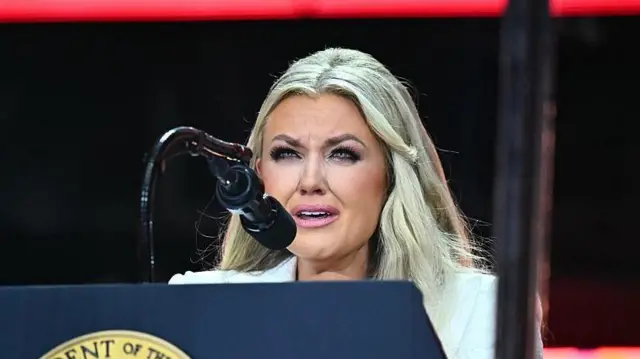
At approximately 10:12 AM, Kirk’s vehicle reportedly diverted from its scheduled route. Surveillance cameras captured the car making a seemingly unnecessary stop near a secluded area, a location that had not been previously disclosed in official statements.
Witnesses claimed to have seen a large SUV pull alongside Kirk’s car, and the two vehicles appeared to engage in a brief exchange. The exact nature of this exchange remains unknown, but Owens notes that it aligns with patterns seen in orchestrated abduction or diversion scenarios in other high-profile cases.
Between 10:15 AM and 11:02 AM — the critical 47-minute window — records of Kirk’s vehicle become fragmented. GPS logs were missing or incomplete, phone communications were disrupted, and security footage from nearby businesses showed suspicious gaps. Owens suggests that this period likely involved strategic planning or manipulation by individuals seeking to control Kirk’s movements.
At 11:03 AM, Kirk’s vehicle was finally observed returning to the public route, but the events that transpired during the missing 47 minutes remain the subject of intense speculation. This window, Owens argues, is where critical evidence could be found — if investigators approach it without bias or preconception.
Candace Owens sought out several individuals with close ties to Charlie Kirk and his professional network to gain insight into the events of that day. While maintaining anonymity for security reasons, these sources offered valuable context.
One close colleague of Kirk remarked:
"Charlie was always cautious. He wouldn’t have taken a detour without a valid reason. The fact that his route changed, and no one can explain why, is extremely troubling. It doesn’t align with his normal behavior."
Another witness, a former security consultant familiar with high-profile figures, offered a professional perspective:
"From a security standpoint, the 47-minute unaccounted period is highly unusual. When a vehicle carrying someone like Charlie Kirk disappears from monitoring systems, it usually indicates interference — either digital, physical, or both. This is rarely coincidental."
These insights support Owens’ contention that the situation was more complex than portrayed in official reports. They also suggest that understanding the actions during that critical window is essential to unraveling the truth.
Digital evidence plays a central role in Owens’ investigation. Leaked communications, emails, and metadata revealed subtle but significant inconsistencies. Some messages from Erika’s correspondence appear to indicate preemptive planning or coordination, though no direct admission of intent exists.

Forensic analysts consulted by Owens’ team noted patterns in message deletion, timestamp alterations, and selective data removal. These techniques are often used in coordinated attempts to obscure evidence. While the evidence is circumstantial, the patterns raise serious questions about transparency and accuracy in the official investigation.
The revelations presented by Owens have sparked a broad range of reactions, both online and offline. Social media platforms are flooded with discussions, theories, and debates.
Supporters of Owens applaud her diligence in questioning the official narrative, emphasizing the need for independent scrutiny. Hashtags calling for transparency and full disclosure have trended intermittently on multiple platforms.
Conversely, some commentators caution against drawing conclusions prematurely. Legal analysts and journalists note that while leaked documents and witness accounts are compelling, they do not constitute proof of guilt. Owens acknowledges these concerns, emphasizing that her goal is not to accuse but to highlight inconsistencies and advocate for further investigation.
Traditional media outlets have also covered the story, albeit with varying degrees of detail. Some reports focused on the sensational elements of the leaked documents, while others examined the methodological rigor of Owens’ approach. The contrasting coverage underscores the tension between public curiosity, media framing, and factual reporting.
The unfolding investigation has broader implications for justice and accountability. Owens argues that high-profile cases like Charlie Kirk’s require more than surface-level explanations. When information is missing, altered, or withheld, it erodes public trust and fuels speculation.






